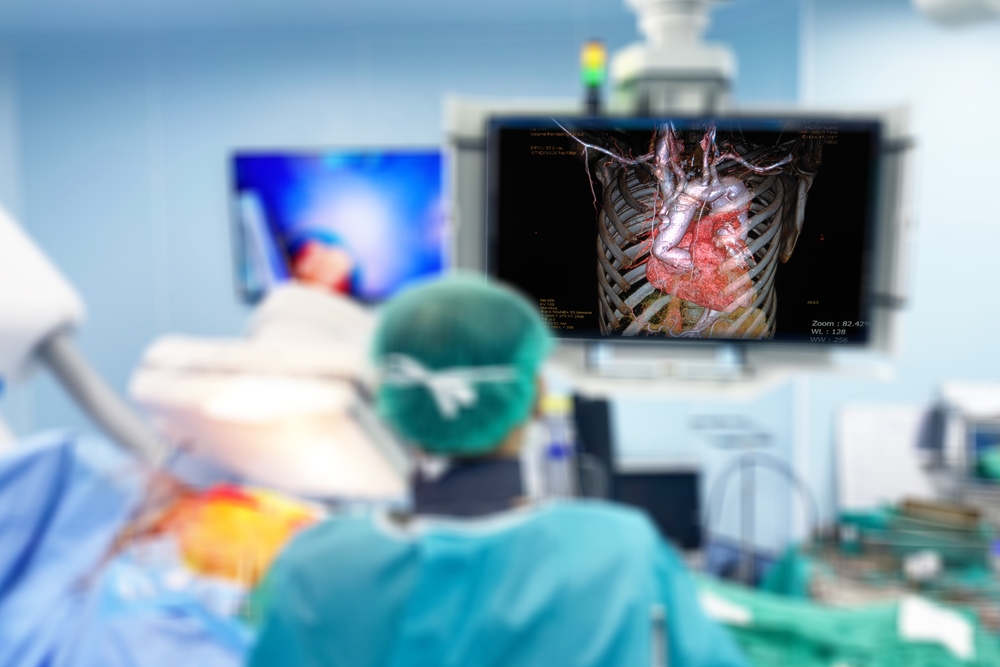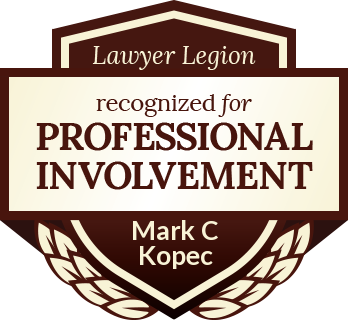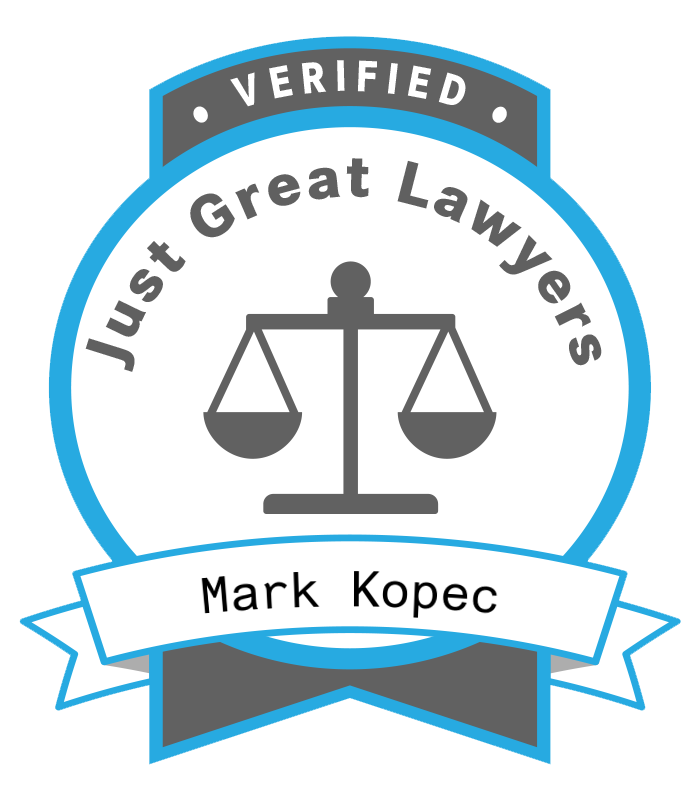Mark Kopec Now
Cardiac Surgeon
Understanding Medical Malpractice and the Cardiac Surgeon
Cardiac surgeons are physicians who perform surgical procedures on the heart and major blood vessels. Their work is specifically for patients with heart conditions. When things go wrong, the consequences can be catastrophic. If you or a loved one has suffered an injury due to a cardiac surgeon’s negligence, you may have a medical malpractice claim. The Kopec Law Firm provides this webpage for a comprehensive overview of the cardiac surgery specialty. It includes bad outcomes in these procedures, and types of malpractice claims. If you have an injury, call Baltimore Cardiac Surgeon Lawyer Mark Kopec.
The Path to Becoming a Cardiac Surgeon
The journey to becoming a cardiac surgeon can take at least 15 years.
- Undergraduate Education (4 years): The first step is earning a bachelor’s degree, often with a focus on science-related fields like biology, chemistry, or pre-med.
- Medical School (4 years): After college, aspiring cardiac surgeons must earn a Doctor of Medicine (M.D.) or Doctor of Osteopathic Medicine (D.O.) degree. The first half of medical school is in classrooms and labs, learning foundational medical sciences. Afterward, the second half involves clinical rotations in various specialties, including surgery.
- Residency (5+ years): Following medical school, a physician must complete a residency program. Cardiac surgeons have a few different training pathways, but the most common is a five-year general surgery residency. This provides a broad foundation in surgical techniques and patient care.
- Fellowship (2-3 years): The final step is a fellowship in cardiothoracic surgery. This is where the surgeon receives hands-on training in heart and chest procedures. During this time, they work under the supervision of experienced cardiac surgeons. Some surgeons may choose an integrated cardiothoracic surgery residency, which combines the general surgery and cardiothoracic training into a single six-year program. An additional fellowship may be required for subspecialties, such as pediatric or congenital heart surgery.

Licensing and Board Certification
To practice medicine, a cardiac surgeon must first be licensed by the state in which they work. This requires graduating from an accredited medical school, completing residency training, and passing a series of national exams.
Beyond licensure, many cardiac surgeons voluntarily pursue board certification from organizations such as the American Board of Thoracic Surgery (ABTS). It involves completing an accredited training program and passing written and oral examinations.
Conditions Treated by Cardiac Surgeons
Cardiac surgeons address a wide range of conditions affecting the heart and the major blood vessels in the chest. These conditions can be life-threatening and often require immediate, skilled intervention. Some of the most common conditions they treat include:
- Coronary Artery Disease: The buildup of plaque in the arteries that supply blood to the heart muscle, leading to blockages.
- Heart Valve Disease: Malfunctioning heart valves that don’t open or close properly, causing blood to flow backward or making the heart work too hard.
- Aortic Aneurysms and Dissections: Weak spots or tears in the aorta, the body’s main artery, which can rupture and lead to fatal bleeding.
- Congenital Heart Defects: Heart abnormalities present at birth, such as atrial septal defects (ASD) or ventricular septal defects (VSD).
- Heart Failure: A condition where the heart is unable to pump enough blood to meet the body’s needs.
- Cardiac Arrhythmias: Irregular heart rhythms that may require surgical intervention, such as atrial fibrillation.
Baltimore cardiac surgeon lawyer Mark Kopec can evaluate the medical condition you had.
The Surgical Team and Work Environment
Cardiac surgeons typically work in large hospitals or specialized heart centers. Their work is never a solo effort. They are the leader of a multidisciplinary team of doctors and other medical providers that includes:
- Cardiologists: Physicians who diagnose and medically manage heart conditions. They work closely with the surgeon to determine if surgery is the best course of action.
- Anesthesiologists: Physicians who manage the patient’s pain and vital signs during surgery.
- Perfusionists: Technicians who operate the heart-lung bypass machine during open-heart surgery.
- Physician Assistants and Nurse Practitioners: Providers who assist the surgeon in the operating room and manage patient care before and after surgery.
- Intensive Care Nurses and Respiratory Therapists: Members of the team who provide continuous monitoring and care in the post-operative period.
Diagnostic Tools and Treatment Modalities
Before surgery, cardiac surgeons rely on a variety of diagnostic tests to plan the most effective procedure. These can include:
- Echocardiogram: An ultrasound of the heart that provides detailed images of its structure and function.
- Electrocardiogram (ECG or EKG): Measures the electrical activity of the heart to detect arrhythmias.
- Cardiac Catheterization: A procedure where a catheter is inserted into a blood vessel and guided to the heart to assess blockages or valve function.
- CT Scan and MRI: Advanced imaging to create detailed pictures of the heart and surrounding structures.
The treatments provided by a cardiac surgeon are primarily surgical, but they may also use non-surgical techniques as part of a patient’s overall care.
Types of Cardiac Surgeries and Associated Risks
Cardiac surgeons perform a wide range of procedures, from routine to complex. The approach to surgery can vary, from traditional open-heart surgery to minimally invasive or robotic techniques.
- Coronary Artery Bypass Grafting (CABG): This is one of the most common heart surgeries. The surgeon takes a healthy blood vessel from another part of the body (e.g., the leg or chest) and uses it to create a new path, or bypass, around a blocked coronary artery. In traditional CABG, the breastbone is cut open (a sternotomy), and the heart is stopped, with a heart-lung bypass machine taking over the function of the heart and lungs.
- Heart Valve Repair or Replacement: The surgeon either repairs a damaged valve to restore its function or replaces it with an artificial or biological valve. This can be done through open-heart surgery or through a minimally invasive approach using smaller incisions.
- Aortic Surgery: Procedures to repair or replace a diseased or enlarged aorta. This is often a complex and high-risk surgery.
- Heart Transplant: For patients with end-stage heart failure, a cardiac surgeon may perform a heart transplant, replacing the diseased heart with a donor heart.
- Ventricular Assist Device (VAD) Implantation: A mechanical pump is implanted to help the heart pump blood, often as a bridge to a heart transplant or as a long-term treatment for heart failure.
Like any major surgery, cardiac procedures can cause injuries that are the result of a surgeon’s or medical team’s negligence. Common surgical injuries include:
- Bleeding and blood clots
- Infection
- Stroke or heart attack
- Irregular heartbeats (arrhythmias)
- Damage to surrounding tissues or organs
- Pneumonia
- Memory loss or cognitive issues
Medical Malpractice Claims with Baltimore Cardiac Surgeon Lawyer Mark Kopec
Medical malpractice occurs when a healthcare professional’s negligence deviates from the accepted standard of care, causing injury or death to a patient. In the context of cardiac surgery, a small error can have devastating consequences. Some of the most common medical malpractice claims brought against cardiac surgeons and their teams include:
- Surgical Errors: This is a broad category that includes a variety of mistakes made during the operation itself. Examples include performing the wrong procedure, operating on the wrong part of the heart, or causing damage to a blood vessel or organ.
- Failure to Obtain Informed Consent: A surgeon has a legal and ethical duty to fully inform the patient about the risks, benefits, and alternatives to a proposed surgery. If a surgeon fails to do so and the patient is harmed by a known risk, it may constitute a claim.
- Anesthesia Errors: Mistakes by the anesthesiologist or the surgical team in administering or monitoring anesthesia can lead to severe and sometimes fatal consequences, such as brain damage or cardiac arrest.
- Foreign Objects Left Behind: One of the most shocking and indefensible errors is when a surgeon leaves a sponge, tool, or other medical instrument inside the patient’s body.
Additional Claims
- Inadequate Post-Operative Care: The surgeon’s duty of care does not end when the operation is complete. Claims can arise from a failure to properly monitor the patient in the ICU, a failure to recognize and treat complications like bleeding or infection, or an improper discharge from the hospital.
- Misdiagnosis or Failure to Diagnose: While often associated with cardiologists, a cardiac surgeon may also be liable for a failure to properly diagnose a condition that required immediate surgical intervention.
- Performing an Unnecessary Surgery: In some cases, a surgeon recommended and performed a surgery that was not medically necessary, and it harmed the patient as a result.
Proving a medical malpractice claim against a cardiac surgeon requires the testimony of medical expert witnesses. These experts must establish that the surgeon’s actions fell below the accepted standard of care and that this negligence directly caused the patient’s injury.
Next Step: Call Baltimore Cardiac Surgeon Lawyer Mark Kopec
If you believe you have been the victim of medical malpractice at the hands of a cardiac surgeon, it is imperative to seek legal counsel immediately. We can evaluate your case and gather expert testimony. We will fight to get you the compensation you deserve for your pain, suffering, and financial losses.
Visit the Kopec Law Firm free consultation page or video. Then contact us at 800-604-0704 to speak directly with Attorney Mark Kopec. He is a top-rated Baltimore medical malpractice lawyer. The Kopec Law Firm is in Baltimore and pursues cases throughout Maryland and Washington, D.C.





